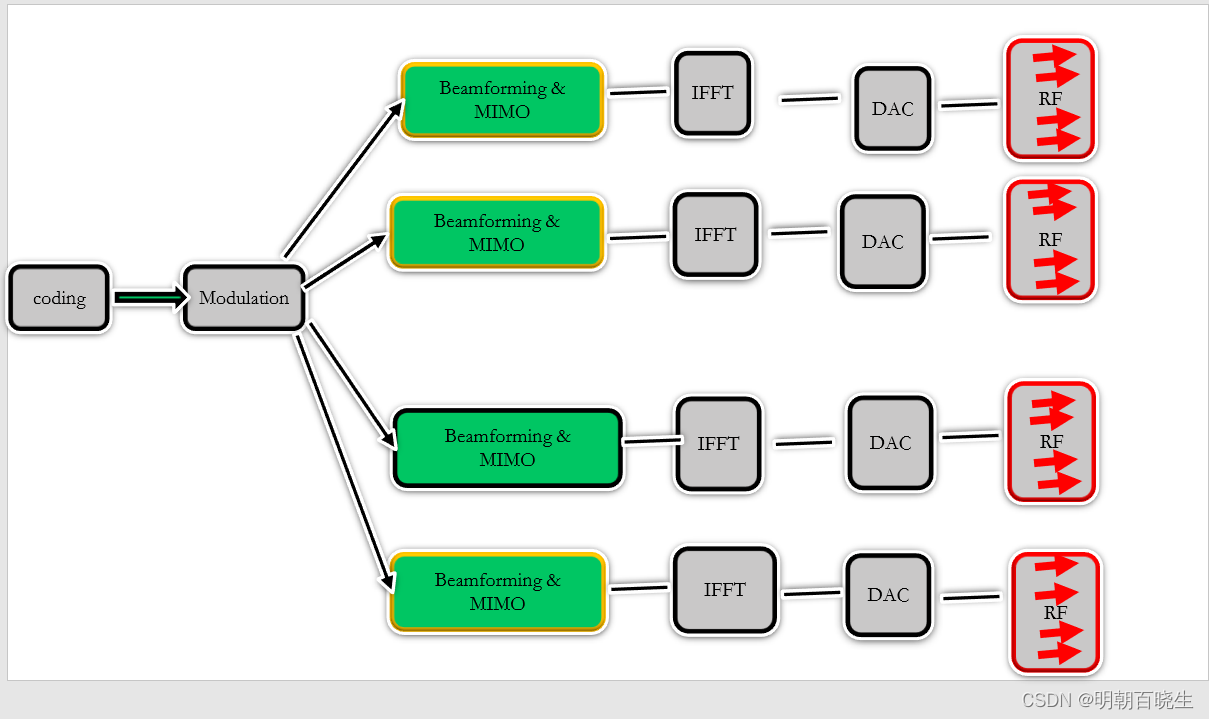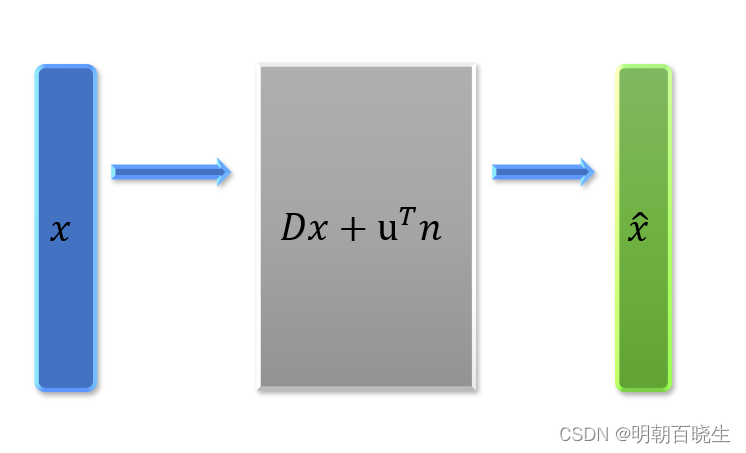【MIMO 从入门到精通】[P4]【MIMO Communications】
前言:
? ??Explains the main approaches to multi-input multi-output (MIMO) communications, including Beamforming, Zero Forcing, and MMSE. * Note that at the 9:19min mark, I made a slight "voice typo", where I should have said: "you need to tell the transmitter what the channel is" (not the receiver), and this also holds for the SVD approach too which I should have mentioned. Check out my 'search for signals in everyday life', by following my social media feeds:

?
MIMO 系统发送符号为, 接收到的符号为
,噪声?
?
接收方如何解码出,本章重点介绍相关的解码方案
目录:
- ? Z.F.receiver
- ? MMSE receiver
- ? Z.F precoder
- ? SVD?receiver
- ? Beamforming 跟 MIMO 关系
??
一? Z.F.receiver
? ?Zero Forcing receiver
? ? ??
? ? ? ? ?
? ? ? ? ?
? ? 该解码方案优点:
? ? ? ? ? ?简单,当噪声很小的时候, 估计值接近真实值x
? ? ? 缺点:
? ? ? ? ? ?当噪声很大的时候,相差较大
? ? ? ? ? ?当noise amplification是非满秩矩阵的时候,相当于一个噪声信号放大器noise amplification
。
? ? ? ? ? 考虑scalar场景:?比如H=0,则其逆为无穷大
二? MMSE receiver

? ??
? ?原理:建议看一下机器学习的回归算法是
? 我们已知y,H.要求x,就是要使得下面的损失函数最小值
??
?就是求微分,使得损失函数最小,利用向量链式法则(参考下面连接:矩阵求导术)
??
?
为了防止过拟合,L2正规化 ,也可以防止不可逆
? ??
? ? ?
?三? Z.F precoder
当发送方通过接收方反馈,知道H的时候,先求出逆矩阵
发送符号:
? ? ? ? ? ? ???
接收符号:
? ? ? ? ? ? ??
? ?优点:
? ?针对noise,没有noise amplification
? ?缺点:
? ? 需要通过反馈 ,通知发送方H
四? SVD?receiver
? ? ? ? ?singlular value decomposition
? ? ? ? ?(u,v 是正交矩阵)
? ? ? ? ?发送符号:
? ? ? ? ? ?
? ? ? ? 接收的符号
? ? ? ? ? ?
? ? ? ? ? 解码
? ? ? ? ?
? ? ? ? ? ? ?(利用正交性)
? ? ? ? ? ? ? ?
? ? ? ? ?
?正交矩阵
?
:? 对角矩阵,由对称矩阵
或
的特征值的开平方组成,称为奇异值(从大到小排列,U和V对应的特征向量亦如此)
? 五? Beamforming 跟 MIMO 关系
? ? ? ?前面讲过通过SVD receiver
? ? ??
? ? ? ?
? ? ?diffrent sub channels different powers
? ? ?当 SNR 很高的时候:发送x的时候使用相同的power: p
? ? ? ? ? ? ? ? ? ? ? ? ? ? ? ? ? ??:? p代表功率放大倍数
? ? ?当SNR 很低的时候:?
? ? ? ? ? ?前面x 是一个向量?
? ? ? ? ? 我们选择出SNR 最好的那一路?,发送?
? ? ? ? ?接收到的信号
? ? ? ? ? ? ? ? ? ?
? ? ? ? ? ? ? ? ? ? ? ??
? ? ? ? ? ? ? ? ? ? ? ? ?
参考:
回归算法:?CSDN
本文来自互联网用户投稿,该文观点仅代表作者本人,不代表本站立场。本站仅提供信息存储空间服务,不拥有所有权,不承担相关法律责任。 如若内容造成侵权/违法违规/事实不符,请联系我的编程经验分享网邮箱:chenni525@qq.com进行投诉反馈,一经查实,立即删除!
- Python教程
- 深入理解 MySQL 中的 HAVING 关键字和聚合函数
- Qt之QChar编码(1)
- MyBatis入门基础篇
- 用Python脚本实现FFmpeg批量转换
- 灰度发布及声明式资源管理(yaml文件)
- python小游戏
- 丢失的数字算法(leetcode第268题)
- 山西电力市场日前价格预测【2024-01-07】
- LibreSSL SSL_connect: SSL_ERROR_SYSCALL in connection to github.com:443
- python/pytorch读取数据集
- c语言—年月日问题
- Kubeadm 方式部署K8s集群
- SpringBoot-基本原理(配置文件的优先级、Bean管理、自动配置原理)
- 在Linux下配置Apache HTTP服务器